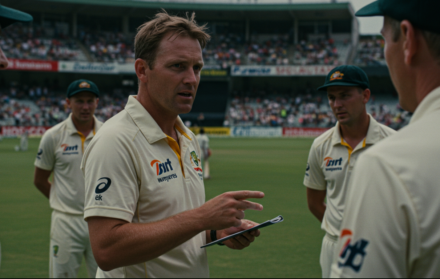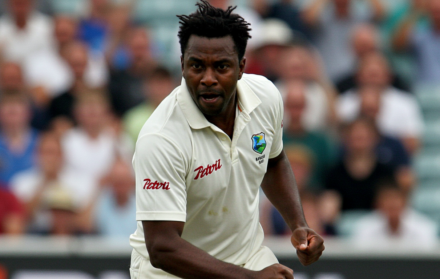
How To Adapt Cricket Strategies To Diverse Game Situations
Adapting cricket strategies to diverse game situations is a crucial skill for players and captains alike, enabling teams to respond effectively to changing conditions and opposition tactics. Whether you’re facing a formidable bowling attack, a challenging pitch, or a tight run chase, the ability to adjust your game plan can make all the difference between success and failure on the cricket field.
When it comes to adapting cricket strategies, one of the key considerations is the field placement. By carefully positioning fielders to exploit the strengths and weaknesses of the opposition batsmen, captains can apply pressure, create scoring opportunities, and take crucial wickets at pivotal moments in the game.
Furthermore, adapting bowling techniques is essential for keeping opposition batsmen on their toes and maintaining control over the game. Whether it’s varying the length and pace of deliveries, employing different types of spin or swing, or targeting specific areas of the pitch, bowlers must be able to adapt their bowling techniques to suit the conditions and exploit any weaknesses in the opposition’s batting lineup.
In addition to on-field strategies, teams must also be prepared to adapt their game plan in response to injuries, fitness concerns, and player availability. With cricket being a physically demanding sport, injuries are an unfortunate reality that teams must contend with. By understanding how to manage and prevent common cricket injuries, teams can minimize disruptions and ensure that they have the best possible chance of success on the field.
Moreover, cricket is not just about individual performances; it’s also a team sport that requires effective communication, collaboration, and teamwork. By embracing cricket as a team-building activity, teams can strengthen bonds, build trust, and develop a winning mentality that will serve them well in all aspects of the game.
Assessing Game Situations in Cricket

When it comes to cricket, the ability to assess game situations becomes indispensable. Understanding the pitch, considering team dynamics, and evaluating the strengths and weaknesses of both sides can greatly impact the outcome.
In this section, we’ll delve into the crucial aspects of reading the pitch and conditions, assessing team capabilities, and considering the match context. So get ready to gain insights into adapting cricket strategies like a pro, no matter the game situation!
Reading the Pitch and Conditions
To effectively adapt cricket strategies to diverse game situations, it is crucial to read the pitch and understand the prevailing conditions. Reading the pitch and conditions involves analyzing the pitch’s characteristics, such as its hardness, grass coverage, and moisture levels.
Assessing weather conditions, including factors like wind speed, humidity, and cloud cover, also plays a role in decision-making. The pitch and conditions influence key aspects like batting, bowling, fielding, and even captaincy strategies.
For instance, if the pitch offers more bounce, bowlers may opt for shorter deliveries, while on a slow pitch, spinners may dominate. Adapting strategies based on the pitch and conditions, and effectively reading the pitch and conditions, can give teams a competitive edge.
Assessing the Strengths and Weaknesses of Your Team and Opponents
Assessing the strengths and weaknesses of your team and opponents is crucial in cricket. Here’s a list of factors to consider:
- Player skill sets: Identify the strengths of your team members, such as a powerful hitter or a skillful bowler, and utilize them effectively.
- Opponent analysis: Study the past performances and playing styles of your opponents to understand their strengths and weaknesses.
- Team dynamics: Assess how well your team members work together and identify any areas that need improvement.
- Fielding capabilities: Evaluate the fielding skills of your team and consider strategies to maximize their strengths and minimize weaknesses.
Fact: By accurately assessing the strengths and weaknesses of both teams, captains can devise effective game plans and gain a competitive edge in cricket matches.
Considering the Match Context
Considering the match context is crucial in adapting cricket strategies to different game situations. Here are key factors to consider:
- Opponent: Evaluate the strengths and weaknesses of the opposing team to tailor your strategy accordingly.
- Pitch and conditions: Analyze the pitch’s nature and how it might affect batting, bowling, and fielding.
- Target: Assess the target you are chasing or defending and adjust your approach accordingly.
- Player form: Consider the form of your team members and their ability to perform under specific match conditions.
- Injuries and substitutions: Adapt strategies based on any injured players or substitutions that might impact your team dynamics.
Adapting Cricket Strategies to Different Game Situations

When it comes to cricket, adaptability is key. In this section, we’ll explore the art of adapting cricket strategies to different game situations. From batting and bowling strategies to fielding and captaincy tactics, we’ll uncover the secrets of success on the cricket field.
Get ready to dive into the dynamic world of cricket strategies and discover how teams and players navigate the ever-changing landscape of the game.
So whether you’re an aspiring cricketer or a passionate fan, this section is your roadmap to mastering the art of adaptation.
Batting Strategies
Batting strategies in cricket play a crucial role in achieving success on the field. Here are a few key considerations to keep in mind when developing your batting strategy:
- Assessing the pitch and conditions: Determine the pace, bounce, and turn of the pitch to adjust your shot selection and timing.
- Understanding your strengths and weaknesses: Analyze your batting style and preferred shots to capitalize on your strengths and work on improving your weaker areas.
- Reading the bowler: Study the bowler’s line, length, and variations to anticipate their deliveries and respond effectively.
- Building partnerships: Collaborate with your batting partners by rotating the strike and building partnerships, maintaining a steady run rate.
- Playing according to match context: Adjust your approach based on the match situation, such as chasing a target or setting a competitive total.
Pro-tip: Practice adaptability and flexibility to switch between offensive and defensive strategies based on the demands of the game.
Bowling Strategies
Bowling strategies play a crucial role in cricket to outplay the opposition and secure wickets. Here are some effective bowling strategies that you should consider:
- Line and Length: Pay attention to consistently bowling in the right areas to challenge the batsman’s skills and induce mistakes.
- Variations: Make use of a range of deliveries, which include slower balls, cutters, and yorkers, in order to keep the batsmen guessing and disrupt their timing.
- Field Placement: Strategically position fielders to create pressure and place the batsman in difficult scoring areas.
- Attack the Weakness: Identify the weaknesses of each batsman and consistently target those areas to force errors.
- Bounce and Swing: Take advantage of the conditions by generating extra bounce or swing to trouble the batsmen and take wickets.
In a crucial match, the bowler demonstrated great skill by cleverly mixing up his pace, deceiving the batsman, and taking consecutive wickets. His variation and accuracy played a significant role in turning the game in favor of his team.
Fielding Strategies

Fielding strategies are essential in cricket to enhance the team’s chances of winning. Here are some crucial fielding strategies to consider:
- Positioning: Proper placement of fielders based on the batsmen’s strengths and weaknesses, focusing on key scoring areas.
- Catchers: Positioning agile fielders in catching positions to capitalize on any mishits or mistimed shots.
- Boundary Riders: Placing fielders on the boundary to prevent boundaries and save runs.
- Quick Throwers: Having fielders with strong throwing arms positioned strategically to prevent easy runs and execute run-outs.
- Squashers: Having fielders close to the batsmen to restrict their freedom to strike.
By implementing effective fielding strategies, teams can apply pressure on the opponents, take crucial wickets, and minimize scoring opportunities.
Captaincy Strategies
Being a cricket captain involves various Captaincy Strategies to effectively lead the team on the field. Here are some key captaincy strategies to consider:
- Effective communication: Maintain clear and open communication with team members to ensure everyone is on the same page.
- Tactical decision-making: Make strategic decisions such as field placements, bowling changes, and batting orders based on the match situation.
- Leadership by example: Lead from the front by setting a good example through your performance, work ethic, and sportsmanship.
- Motivate and inspire: Keep the team motivated and focused, especially during challenging moments, by providing encouragement and inspiration.
- Adaptability: Be adaptable to changing game situations and make quick decisions accordingly.
- Man management: Understand each player’s strengths, weaknesses, and preferences to effectively manage the team.
By employing these Captaincy Strategies, a cricket captain can effectively lead the team and increase their chances of success.
Example Scenarios and Adaptations

When it comes to adapting cricket strategies to diverse game situations, example scenarios and adaptations play a vital role.
In this section, we’ll dive into four key scenarios: chasing a high target, defending a low total, handling quick wickets and rebuilding, and dealing with tail-enders batting.
From the pressure of chasing down a big score to strategizing against opponents with nothing to lose, these situations demand strategic and tactical flexibility.
Let’s explore how teams can adapt their gameplay to overcome these challenges and emerge victorious.
Scenario 1: Chasing a High Target
When chasing a high target in cricket, teams need to adopt specific strategies to increase their chances of success. Here are some steps to consider:
- Assess the required run rate and plan the innings accordingly.
- Identify key opposition bowlers and plan strategies to neutralize their impact.
- Keep wickets in hand initially and build partnerships to stabilize the innings.
- Take calculated risks by rotating strike and targeting boundaries at appropriate times.
- Maintain a balance between aggressive and cautious batting based on the match situation.
- Utilize power hitters towards the end to accelerate the scoring rate.
- Stay calm under pressure and execute pre-planned strategies effectively.
Scenario 2: Defending a Low Total
Defending a low total in cricket requires strategic planning and execution.
- Focus on building pressure on the batting team through tight bowling and fielding.
- Deploy defensive field placements with extra fielders close to the batsmen to prevent easy runs.
- Vary the bowling tactics, mixing slower deliveries with well-directed bouncers or yorkers.
- Create a plan to target the opposition’s weak batsmen and put them under pressure.
Fun fact: In cricket, the lowest total successfully defended in an international match is 35 runs by Zimbabwe against the UAE in 2008.
Scenario 3: Quick Wickets and Rebuilding
When a team loses quick wickets, it becomes crucial to focus on rebuilding the innings. The batting team needs to form partnerships and stabilize the situation. The batting strategy should prioritize building a solid foundation rather than going for aggressive shots.
The batsmen should focus on rotating the strike, playing defensively, and minimizing risks. Taking singles and twos, along with occasional boundaries, helps in regaining momentum. Patience and resilience are key during this phase, as the team aims to rebuild a competitive total.
Fact: In an international cricket match, the record for the highest successful fourth-innings chase is held by the West Indies, who achieved a target of 418 runs against Australia in 2003.
Scenario 4: Tail-enders Batting
Tail-enders refer to the last few batsmen in a cricket team’s batting lineup. These players are usually not known for their batting skills and often face challenges when facing skilled bowlers.
The goal for tail-enders is usually to provide support to the top-order batsmen and try to accumulate as many runs as possible. Their primary objective is to protect the wickets and not get out easily.
To achieve this, tail-enders should focus on defensive shots, blocking deliveries, and running singles whenever possible. By doing so, they can frustrate the bowlers, tire them out, and contribute valuable runs to the team’s total.
Pro-tip: Tail-enders should also work on improving their batting skills and technique through regular practice sessions. This can help them become more confident and reliable batsmen, providing crucial contributions to the team’s success in challenging situations.
The Importance of Flexibility and Decision-making

Flexibility and quick decision-making are key in cricket. Recognizing the right moment to change strategies and adapting them in real-time can make or break a team’s performance. In this section, we’ll dig into the importance of these skills, exploring why they are crucial for success on the cricket field.
Get ready to uncover valuable insights on recognizing when to shift strategies and how to adapt them seamlessly during the game. Strap in, because the game is about to get even more exciting!
Recognizing When to Change Strategies
Recognizing when to change strategies is of utmost importance in the game of cricket. It is essential because it allows teams to adapt their game plan accordingly, based on the ever-evolving match situation.
Various key factors can serve as indicators that indicate the necessity of a strategy change, such as alterations in pitch or weather conditions, considering the strengths and weaknesses of both your own team and your opponents, and the overall match context.
Therefore, captains and coaches must remain constantly vigilant to these factors and promptly make decisions to modify their batting, bowling, fielding, and captaincy strategies.
This level of flexibility and effective decision-making is absolutely critical to ensure that the team can optimize their chances of achieving success in a wide range of game situations.
Adapting Strategies in Real-Time’
- Adapting strategies in real-time is crucial in cricket to stay competitive and respond effectively to changing game situations. Here are steps to adapt strategies on the fly:
- Monitor the game situation continuously, understanding the current dynamics and assessing the strengths and weaknesses of both teams.
- Read the pitch and conditions to determine if any adjustments are needed in batting, bowling, or fielding strategies.
- Analyze the match context, considering factors like the target, run rate, and wicket conditions.
- Communicate with teammates and discuss potential strategy changes based on the situation.
- Recognize when strategies need to be altered, such as when wickets fall quickly or when the game requires a change in approach.
- Make real-time decisions to adapt batting, bowling, fielding, or captaincy strategies, based on the evolving situation.
By staying flexible and making timely adjustments, teams can maximize their chances of success in diverse game situations.





